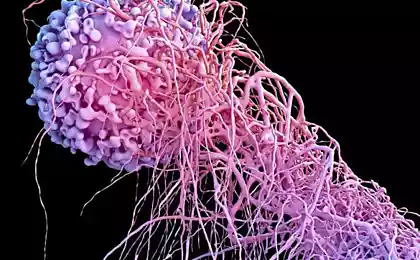300
Popular ingrained myths that we still believe
Humanity has always sought to explain the phenomena and things that surround it. However, these explanations are not always true. PR agents often resort to using embellished information to achieve their marketing goals. Popular myths are born out of the blue. Historical data often come to us in a modified or inaccurate form, because in this format they are easier to remember.

Today's edition. "Site" It debunks 14 popular myths that have been ingrained in our minds since childhood.
The reality is that soap does not kill bacteria. It just washes them off the surface of the skin. Washing hands with soap effectively removes fat, which serves as a breeding ground for bacteria, thereby promoting their removal.
In fact, warts are benign formations caused by the human papilloma virus. Frogs and toads have nothing to do with this.
Despite the fact that the length of the Great Wall of China exceeds 7000 kilometers, it is extremely difficult to see it from space. Its color merges with the surrounding landscape, and the wall can only be seen under certain lighting and weather conditions, and from a low orbit.

Popular myths: Long-term watching TV can cause eye fatigue, but it does not cause long-term damage to vision. The eyes just need rest after a long stretch.
Brain scans show that even uttering a few words involves more than ten percent of the brain. Scientists have found no part of the brain that is not active or does not affect our thoughts, movements and emotions.

The blue part of the eraser was designed to remove pencil inscriptions from dense paper. It is not designed to erase ink and can damage thin paper.
It takes seven years to digest gum The human body does not digest gum, even in seven years. This does not mean that gum gets stuck in the body. It passes through the digestive system and comes out naturally like any other food.
Popular myths: If ostriches stuck their heads in the sand in fear, they could suffocate. Instead, they lie down on the ground and press their head and neck to the ground if they feel threatened.

Carrots are good for eye health and help prevent degeneration of eye muscles, but they do not improve vision.
In fact, the natural color of the teeth in humans is yellowish. Snow-white teeth are the result of dental procedures and whitening.
Popular myths: Dogs see the world in color, although their perception of colors is not as vivid as in humans.

Elephants move very quietly and practically do not make sounds when walking due to their soft sole.
Bulls react aggressively to red Bulls do not react to color. They respond to sudden movements in their field of vision that cause them aggression.
Popular myths: Chameleons change color to merge with the surroundings of Chameleons change color mainly for communication and thermoregulation. Their skin color often reflects an emotional state rather than a desire to blend in with their environment.

Now you know that's not true. We hope you enjoyed discovering this world with us. What interesting facts do you know? Share it in the comments.

Today's edition. "Site" It debunks 14 popular myths that have been ingrained in our minds since childhood.
The reality is that soap does not kill bacteria. It just washes them off the surface of the skin. Washing hands with soap effectively removes fat, which serves as a breeding ground for bacteria, thereby promoting their removal.
In fact, warts are benign formations caused by the human papilloma virus. Frogs and toads have nothing to do with this.
Despite the fact that the length of the Great Wall of China exceeds 7000 kilometers, it is extremely difficult to see it from space. Its color merges with the surrounding landscape, and the wall can only be seen under certain lighting and weather conditions, and from a low orbit.

Popular myths: Long-term watching TV can cause eye fatigue, but it does not cause long-term damage to vision. The eyes just need rest after a long stretch.
Brain scans show that even uttering a few words involves more than ten percent of the brain. Scientists have found no part of the brain that is not active or does not affect our thoughts, movements and emotions.

The blue part of the eraser was designed to remove pencil inscriptions from dense paper. It is not designed to erase ink and can damage thin paper.
It takes seven years to digest gum The human body does not digest gum, even in seven years. This does not mean that gum gets stuck in the body. It passes through the digestive system and comes out naturally like any other food.
Popular myths: If ostriches stuck their heads in the sand in fear, they could suffocate. Instead, they lie down on the ground and press their head and neck to the ground if they feel threatened.

Carrots are good for eye health and help prevent degeneration of eye muscles, but they do not improve vision.
In fact, the natural color of the teeth in humans is yellowish. Snow-white teeth are the result of dental procedures and whitening.
Popular myths: Dogs see the world in color, although their perception of colors is not as vivid as in humans.

Elephants move very quietly and practically do not make sounds when walking due to their soft sole.
Bulls react aggressively to red Bulls do not react to color. They respond to sudden movements in their field of vision that cause them aggression.
Popular myths: Chameleons change color to merge with the surroundings of Chameleons change color mainly for communication and thermoregulation. Their skin color often reflects an emotional state rather than a desire to blend in with their environment.

Now you know that's not true. We hope you enjoyed discovering this world with us. What interesting facts do you know? Share it in the comments.























